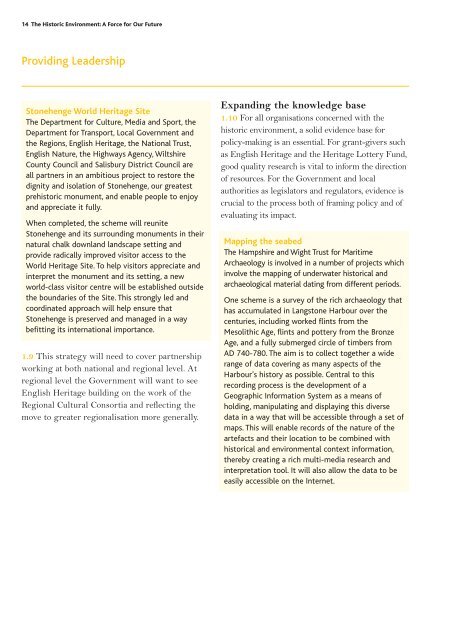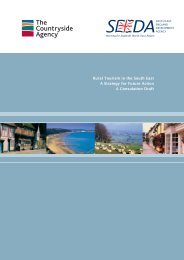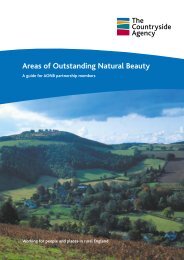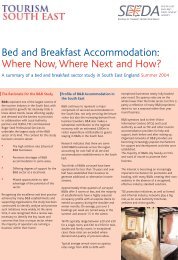The Historic Environment: A Force for Our Future - TourismInsights
The Historic Environment: A Force for Our Future - TourismInsights
The Historic Environment: A Force for Our Future - TourismInsights
You also want an ePaper? Increase the reach of your titles
YUMPU automatically turns print PDFs into web optimized ePapers that Google loves.
14<strong>The</strong> <strong>Historic</strong> <strong>Environment</strong>: A <strong>Force</strong> <strong>for</strong> <strong>Our</strong> <strong>Future</strong><br />
Providing Leadership<br />
Stonehenge World Heritage Site<br />
<strong>The</strong> Department <strong>for</strong> Culture, Media and Sport, the<br />
Department <strong>for</strong> Transport, Local Government and<br />
the Regions, English Heritage, the National Trust,<br />
English Nature, the Highways Agency, Wiltshire<br />
County Council and Salisbury District Council are<br />
all partners in an ambitious project to restore the<br />
dignity and isolation of Stonehenge, our greatest<br />
prehistoric monument, and enable people to enjoy<br />
and appreciate it fully.<br />
When completed, the scheme will reunite<br />
Stonehenge and its surrounding monuments in their<br />
natural chalk downland landscape setting and<br />
provide radically improved visitor access to the<br />
World Heritage Site. To help visitors appreciate and<br />
interpret the monument and its setting, a new<br />
world-class visitor centre will be established outside<br />
the boundaries of the Site. This strongly led and<br />
coordinated approach will help ensure that<br />
Stonehenge is preserved and managed in a way<br />
befitting its international importance.<br />
1.9 This strategy will need to cover partnership<br />
working at both national and regional level. At<br />
regional level the Government will want to see<br />
English Heritage building on the work of the<br />
Regional Cultural Consortia and reflecting the<br />
move to greater regionalisation more generally.<br />
Expanding the knowledge base<br />
1.10 For all organisations concerned with the<br />
historic environment, a solid evidence base <strong>for</strong><br />
policy-making is an essential. For grant-givers such<br />
as English Heritage and the Heritage Lottery Fund,<br />
good quality research is vital to in<strong>for</strong>m the direction<br />
of resources. For the Government and local<br />
authorities as legislators and regulators, evidence is<br />
crucial to the process both of framing policy and of<br />
evaluating its impact.<br />
Mapping the seabed<br />
<strong>The</strong> Hampshire and Wight Trust <strong>for</strong> Maritime<br />
Archaeology is involved in a number of projects which<br />
involve the mapping of underwater historical and<br />
archaeological material dating from different periods.<br />
One scheme is a survey of the rich archaeology that<br />
has accumulated in Langstone Harbour over the<br />
centuries, including worked flints from the<br />
Mesolithic Age, flints and pottery from the Bronze<br />
Age, and a fully submerged circle of timbers from<br />
AD 740-780. <strong>The</strong> aim is to collect together a wide<br />
range of data covering as many aspects of the<br />
Harbour’s history as possible. Central to this<br />
recording process is the development of a<br />
Geographic In<strong>for</strong>mation System as a means of<br />
holding, manipulating and displaying this diverse<br />
data in a way that will be accessible through a set of<br />
maps. This will enable records of the nature of the<br />
artefacts and their location to be combined with<br />
historical and environmental context in<strong>for</strong>mation,<br />
thereby creating a rich multi-media research and<br />
interpretation tool. It will also allow the data to be<br />
easily accessible on the Internet.
















